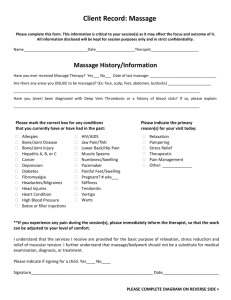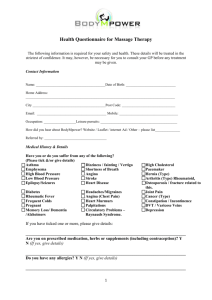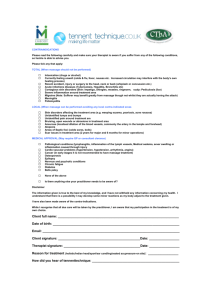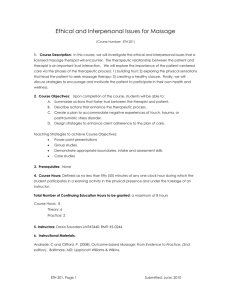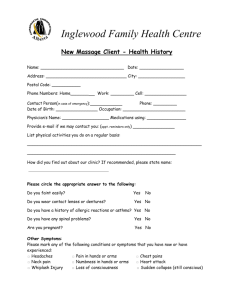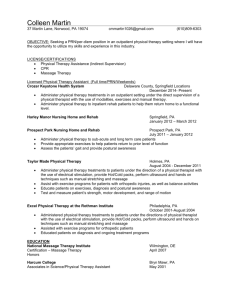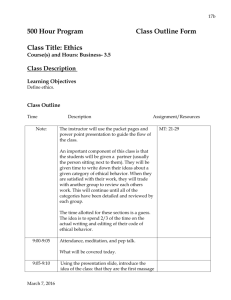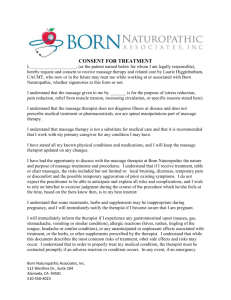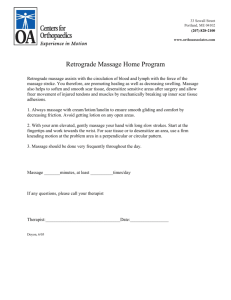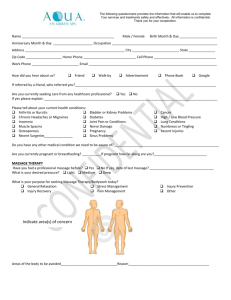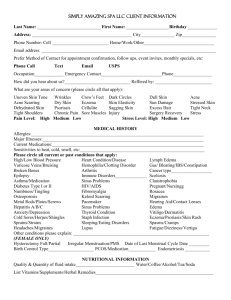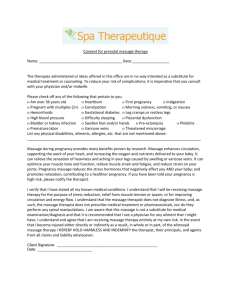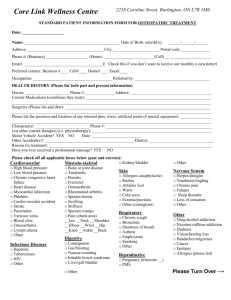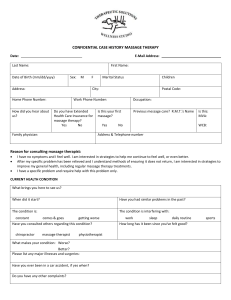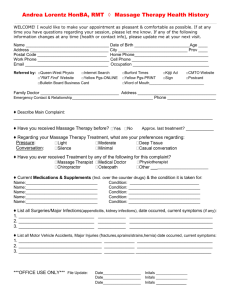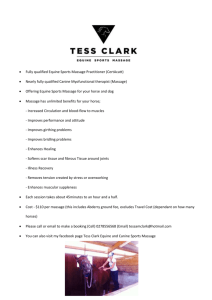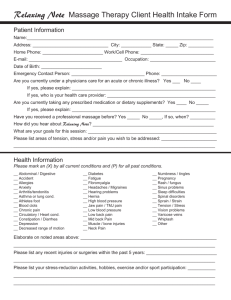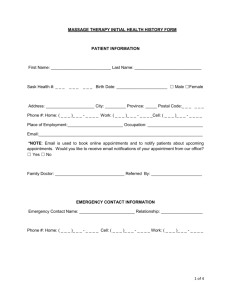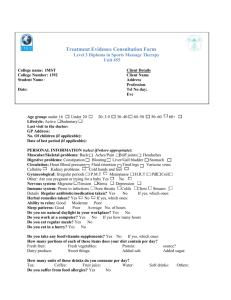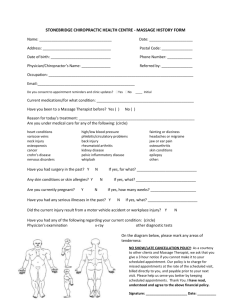Answers to Chapter Review Questions
advertisement
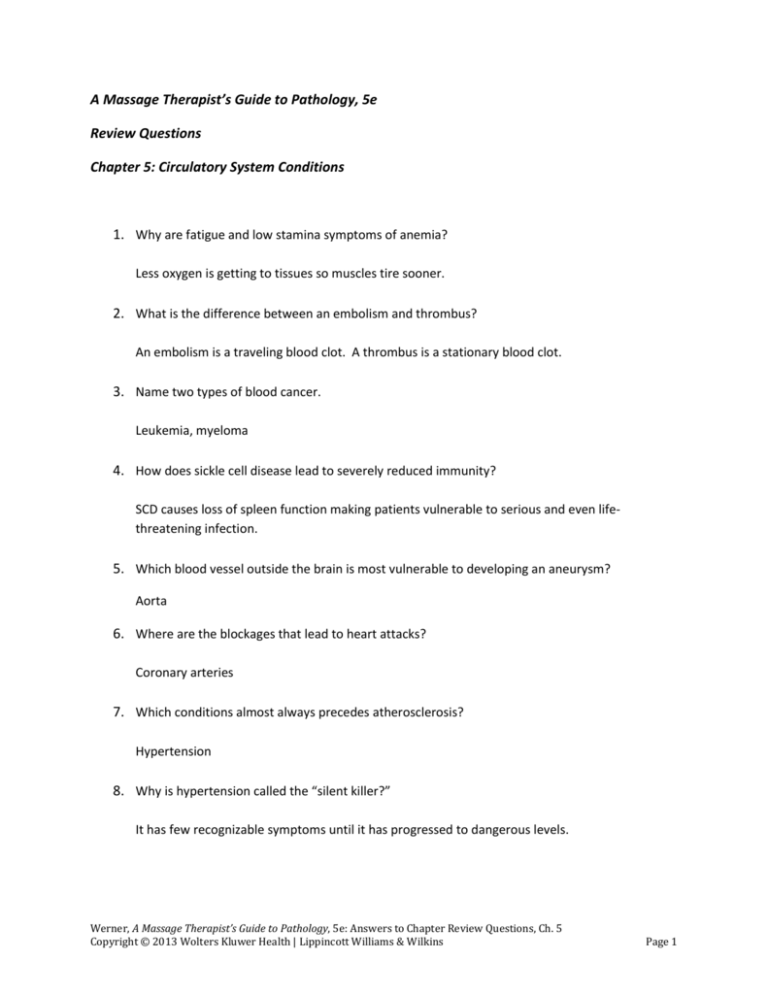
A Massage Therapist’s Guide to Pathology, 5e Review Questions Chapter 5: Circulatory System Conditions 1. Why are fatigue and low stamina symptoms of anemia? Less oxygen is getting to tissues so muscles tire sooner. 2. What is the difference between an embolism and thrombus? An embolism is a traveling blood clot. A thrombus is a stationary blood clot. 3. Name two types of blood cancer. Leukemia, myeloma 4. How does sickle cell disease lead to severely reduced immunity? SCD causes loss of spleen function making patients vulnerable to serious and even lifethreatening infection. 5. Which blood vessel outside the brain is most vulnerable to developing an aneurysm? Aorta 6. Where are the blockages that lead to heart attacks? Coronary arteries 7. Which conditions almost always precedes atherosclerosis? Hypertension 8. Why is hypertension called the “silent killer?” It has few recognizable symptoms until it has progressed to dangerous levels. Werner, A Massage Therapist’s Guide to Pathology, 5e: Answers to Chapter Review Questions, Ch. 5 Copyright © 2013 Wolters Kluwer Health | Lippincott Williams & Wilkins Page 1 9. Describe how a person may have any three of the following conditions at the same time: high blood pressure, chronic renal failure, edema, atherosclerosis, aortic aneurysm, stroke. These conditions listed are a result of progressively corroding arteries 10. A client has a deep ache in the lower leg. Distal to the knee the tissue is clammy and edematous. Pressing at the ankle leaves a dimple, which takes several minutes to disappear. What cautions must be exercised with this client? This client is showing symptoms that parallel right sided heart failure. Any massage that requires them to adapt to changing environments may be too challenging to receive safely. Gentle or energetic bodywork that invites rather than imposes change may help, although it is unlikely to change their prognosis. Werner, A Massage Therapist’s Guide to Pathology, 5e: Answers to Chapter Review Questions, Ch. 5 Copyright © 2013 Wolters Kluwer Health | Lippincott Williams & Wilkins Page 2
